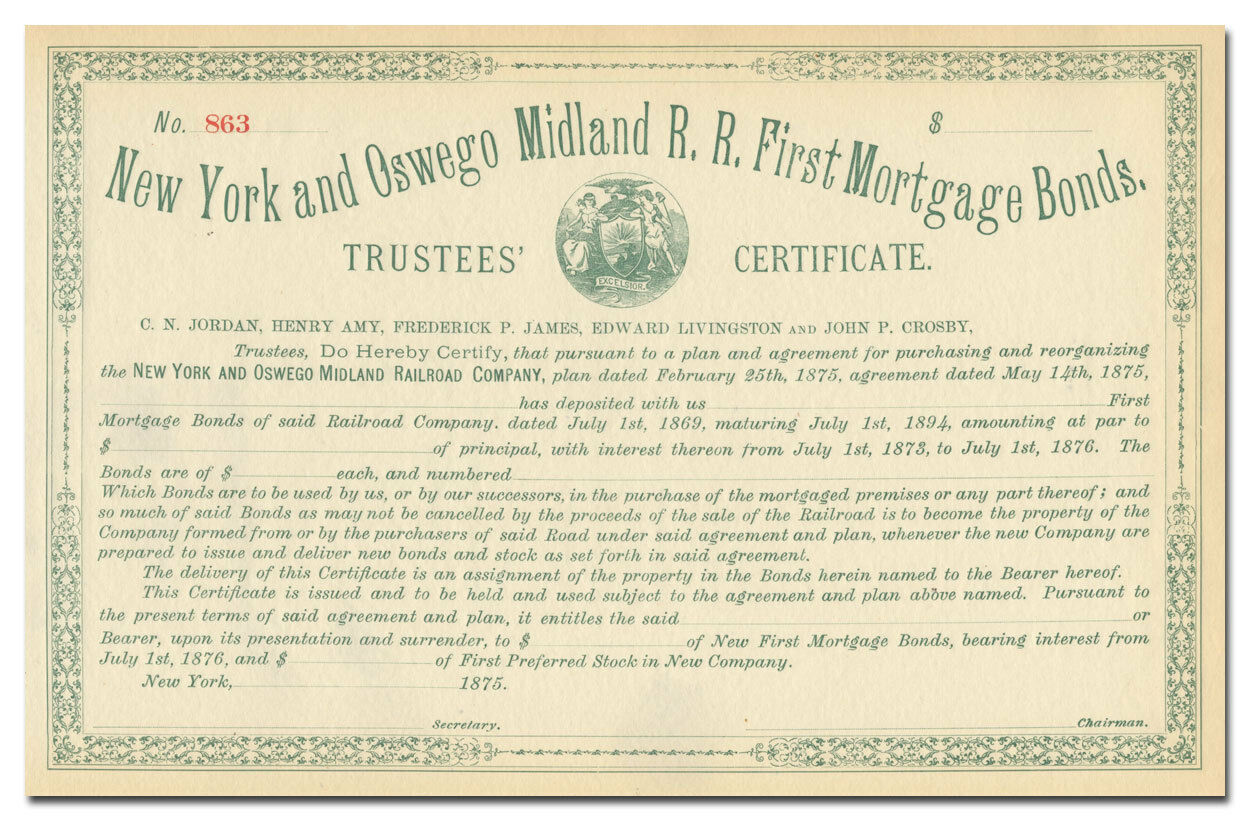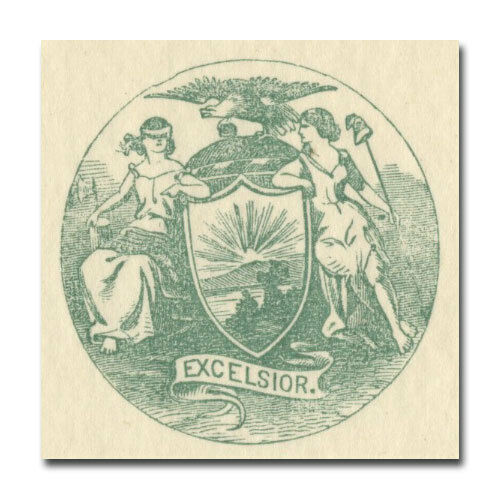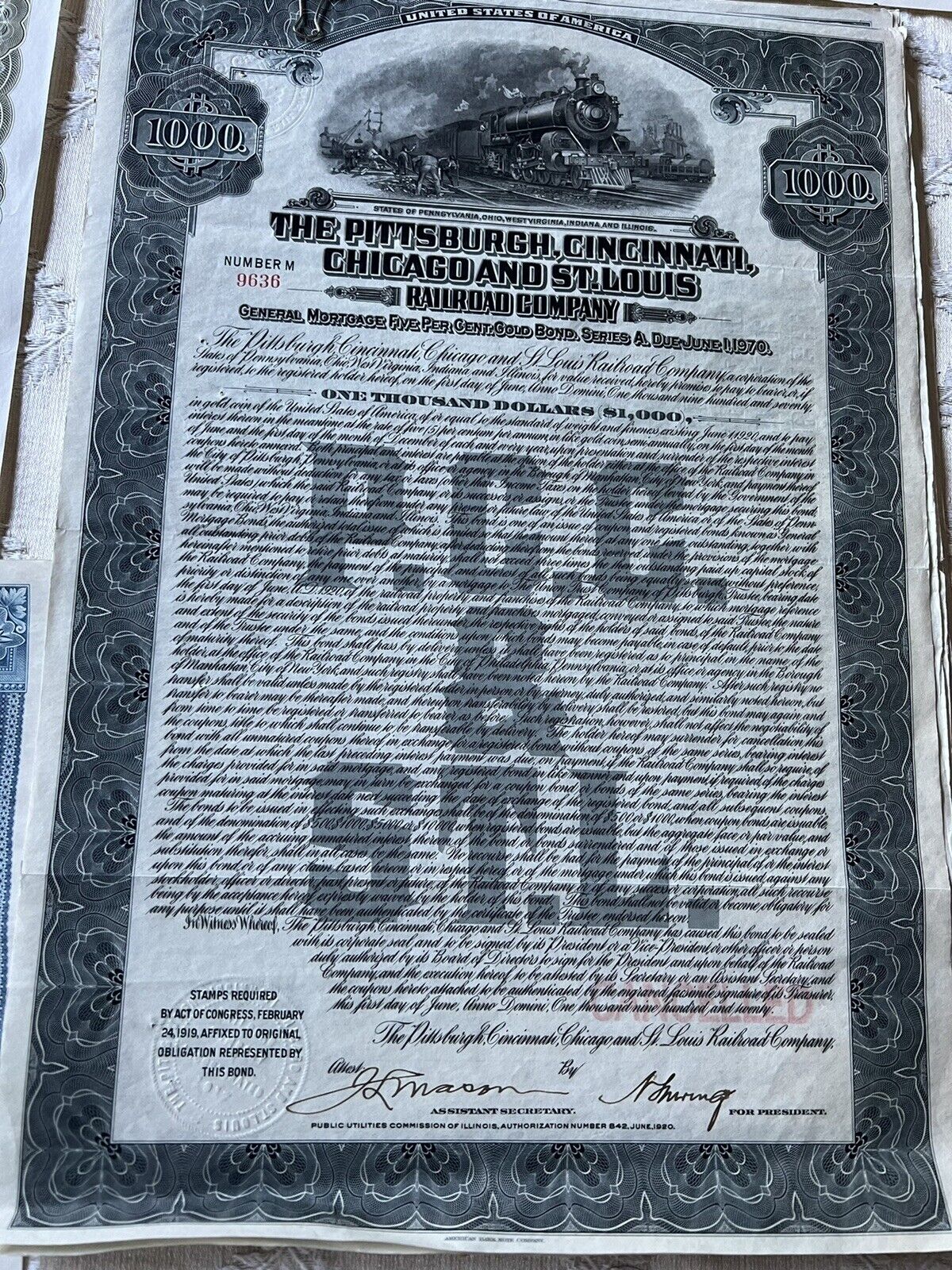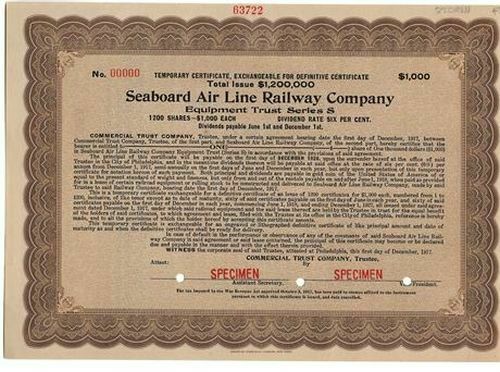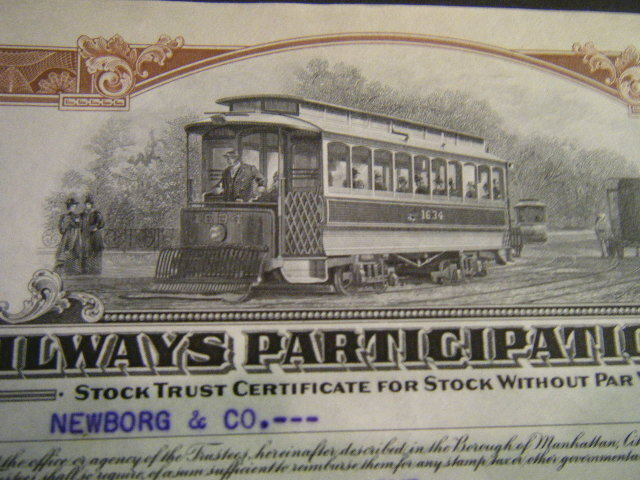-40%
New York and Oswego Midland Railroad Company Bond Certificate
$ 3.68
- Description
- Size Guide
Description
New York and Oswego Midland Railroad Company Bond CertificateThis piece is an Ebay exclusive. We are only offering this piece here!
The price of this piece has been reduced!!!
The original price of this item was .99. You now save 22%!!
The New York & Oswego Midland Railroad , the O&W's predecessor, was the grandiose vision of Dewitt C. Littlejohn, a dynamic politician bearing an uncanny resemblance to Abraham Lincoln. His concept of a direct rail route northwest across New York State, serving virgin territory not reached by any existing line, seemed logical.
Thus in 1868 the "Midland" began building, meandering this way and that to reach the towns that had put up money for its construction. Its twisting route was built "at right angles to the mountains" requiring steep grades, high bridges and enormous fills. Construction costs far exceeded estimates, and within a month of completion the Midland was bankrupt. But it survived, and was reorganized in 1880 as the New York, Ontario & Western Railway.
Shortly after the O&W was incorporated, its owners became involved in the promotion and construction of the New York, West Shore & Buffalo, a route that eventually would parallel Cornelius Vanderbilt's New York Central & Hudson River all the way to Buffalo via Albany, N.Y. Naturally, NYC&HR viewed the West Shore as a nuisance or blackmail scheme.
Complicated financial arrangements existed between the O&W and the West Shore that were detrimental to the corporate health of the former. However, this was mitigated by the West Shore's construction of a branch from its main line at Cornwall, N.Y., to Middletown in 1883 and by opening terminal facilities in Weehawken, on the Hudson River across from New York City, in 1884. These projects provided the O&W with a more-reliable and more-direct route to the metropolitan area than had been available with the NJM connection. The O&W-West Shore combination was dissolved when the later entered bankruptcy in 1884 and was subsequently leased by the NYC. The Middletown Branch became part of the O&W, and NYC permitted O&W to continue using the West Shore between Cornwall and Weehawken.
The O&W underwent an administrative reorganization after its involvement with the West Shore came to an end. Thomas P. Fowler, a talented lawyer formerly with the NYC's legal department, became the new president.. He is reputed to have said that he wondered why the O&W had been built and why, after entering bankruptcy, it hadn't been allowed to stay there. Regardless of his comment, he must have seen some potential in the line, and with the American economy in a period of expansion, he set out to make a respectable property of the NYO&W.
During Fowler's term, the railroad significantly aided in, or undertook the development of, several industries. It firmly established itself as a tourist carrier to the resort hotels and camps in the mountains of Orange, Sullivan, and Delaware counties (often referred to as the "lower Catskills"). The road expanded its operations in the haulage of milk and dairy products and, most importantly, it became a carrier of anthracite coal by tapping the northern Wyoming Valley coal field in northeastern Pennsylvania through the railroad's most-ambitious expansion program: the construction in 1889-90 of the 55-mile Scranton Division.
Although the coal business wavered in the 1920's, it remained strong into the early years of the Great Depression and it permitted the O&W to continue paying dividends. Nonetheless, petroleum fuels, natural gas and electricity were making ever greater inroads into coal markets. Coal was losing ground, but it definitely was not out. O&W handled only about four percent of the anthracite shipped out of Pennsylvania, but in the early 1930's, this one commodity still accounted for over 50 percent of the railroad's income. But this was an unhealthy situation, one of too great a reliance on one industry.
The decline of coal was not O&W's only dilemma. Economic activity as a whole in the U.S. was changing dramatically. Manufacturing activities were moving to the South, Southwest and West, and the resultant population shifts were changing the consumer markets and the rural economy upon which the early O&W and its predecessors had relied. What the OM's developers had promised the railroad would do had occurred; but it was Western railroads opening Western lands to agricultural development that better filled the promise. The decline in the importance of the small towns and cities, the expansion of the suburban industrial parks, and the population shifts to metropolitan areas or to other parts of the country were severely felt by "rural roads" such as the O&W.
On Feb, 25, 1937, the O&W advised the holders of it's Refunding Mortgage Bonds, due in 1992, that it could not pay the interest due on March 1. Two of the three railroad-owned collieries had earlier defaulted on their loans from the railroad. This, coupled with an overall decease in anthracite tonnage, reduced freight rates, increased taxes and other increased expenses caused the railroad to default on its financial obligations. As a result, O&W entered a voluntary bankruptcy from which it would not emerge.
Frequently Asked Questions:
Is the certificate in this listing, the exact piece I will receive?
For this listing - no, t
he images are representative. We do this when multiple quantities are being offfered. You will receive a certificate in similar condition; however dating, denomination, certificate number and issuance details may vary.
Is this document authentic or a reproduction?
All pieces we offer are originals - we do not sell reproductions. If you ever find one of our pieces not to be authentic, it may be returned at any time.
Can this certificate be cashed in?
All of our certificates are sold only as collectible pieces, as they are either canceled or obsolete. Certificates carry no value on any of today's financial indexes and no transfer of ownership is implied.
Do you combine shipping?
We offer flat rate shipping - whether you order 1 certificate or 100 - you pay only the published flat rate.
To take advantage of our flat rate shipping offer,
you must add all of the pieces you would like to your eBay cart
and perform a single checkout. If you use "Buy It Now" for each individual certificate, you will be charged a shipping charge each time - this is a limitation of the eBay system.
Is all of your inventory on eBay?
Absolutely not! We have 1,000s of certificates on our website.
